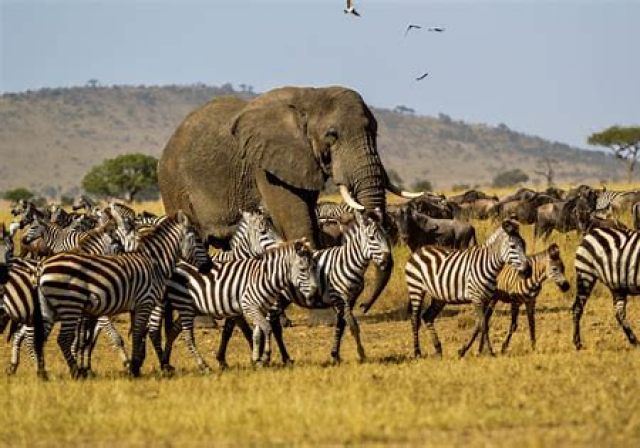It is hard to believe that we are only a few days away from departing for our 12 day African Safari. To be clear, until we’re sitting on the plane leaving from Frankfurt to Nairobi, the last leg of the outbound trip, we are taking nothing for granted. Although we are fully vaccinated, we still have to get a negative COVID PCR test that is taken 96 hours prior to arriving in Nairobi. We don’t need one for flying from the United States through Frankfurt, but obviously we will have them anyway. Once we arrive in Nairobi this Sunday evening, our adventure will start first thing that Monday morning. It will be a very full itinerary, but one that we are very excited about. (pictures included are not our own as we obviously haven’t been on the safari yet 😉)

Day 1 – We drive from our hotel in Nairobi to our lodge at the Amboseli National Park, which is located in Tanzania. Even though we will start our day with a several hour drive, we will still spend the afternoon enjoying our first game viewing drive. This is one of the few lodges where we will spend more than a single night, but fortunately we’re packing light.
Day 2 – We have a full day in the Amboseli National Park, which has views of Mount Kilimanjaro in the distance. We will either spend a full day out on game viewing drives or do a morning and afternoon game viewing drive with time at the lodge to relax in between. We will certainly enjoy having the opportunity to spend a second night in the lodge.
Day 3 – In the morning we will drive from Amboseli National Park to Lake Manyara. We will once again enjoy an afternoon game viewing drive before spending the night in the lodge.
Day 4 – We will have the opportunity for both morning and afternoon game viewing drives before making the drive from Lake Manyara to Ngorongoro. Ngorongoro features the world’s largest, inactive and intact volcanic caldera, but it is the abundance of wildlife that are the true attraction.
Day 5 – We make the drive from Ngorongoro to the Serengeti National Park where will we spend two nights at our lodge there. We will get to go for an afternoon game viewing drive inside of the Serengeti National Park.

Day 6 – We get a full day exploring the Serengeti National Park with either a full day game drive or once again breaking it up into morning and afternoon game viewing drives. The Serengeti is a World Heritage Site and will certainly be just one of many highlights of our safari.
Day 7 – From the Serengeti, we drive back to Kenya to visit the famous Masai Mara. Along the way to the last of our two-night lodge stays, we will get to enjoy a variety of wildlife.
Day 8 – We enjoy a full day in the Masai Mara, which boasts some of the most diverse numbers of wildlife anywhere in the world. Due to COVID, we will likely not get to go to one of the local villages, but we are hopeful that we have that opportunity.
Day 9 – Continuing our circular safari circuit, we go from the Masai Mara to Lake Naivasha. We will get to enjoy an afternoon boat ride followed by more game and bird viewing.
Day 10 – We make our way from Lake Naivasha to Lake Nakuru, which is famous for the flocks of flamingos that visit the lake, although their numbers have diminished somewhat. Both lakes also provide opportunities to see hippos, which are one of the most dangerous animals for people on safari.

Day 11 – Exhausted, we leave Lake Nakuru to return to Nairobi and enjoy a relaxing evening in our hotel there. After 10 nights in lodges and tent camps, a night in a modern hotel will be a nice change of pace.
Day 12 – We have a full day tour of Nairobi where we’ll enjoy seeing a baby elephant orphanage, the famous Giraffe Center, and see the local bead artisans. It will also provide us the opportunity to get our COVID test, which is necessary for our return trip to the United States.
Day 13 – We have a full day on our own in Nairobi. We have nothing planned at this point and will likely use it visit some of the local markets or simply relax before the long flight home that doesn’t start until late in the evening the following day.
As you can clearly tell, when we said that we had a very full itinerary for our trip, we weren’t kidding. In addition to everything listed above, at one point during the safari, we are hoping to go for a balloon ride to see the amazing scenery and animals from the air. Not only is it our first trip in over a year and a half, it is likely the only time that we’ll have the opportunity to visit this part of Africa, so we wanted to make sure that we made the most of our time.






























